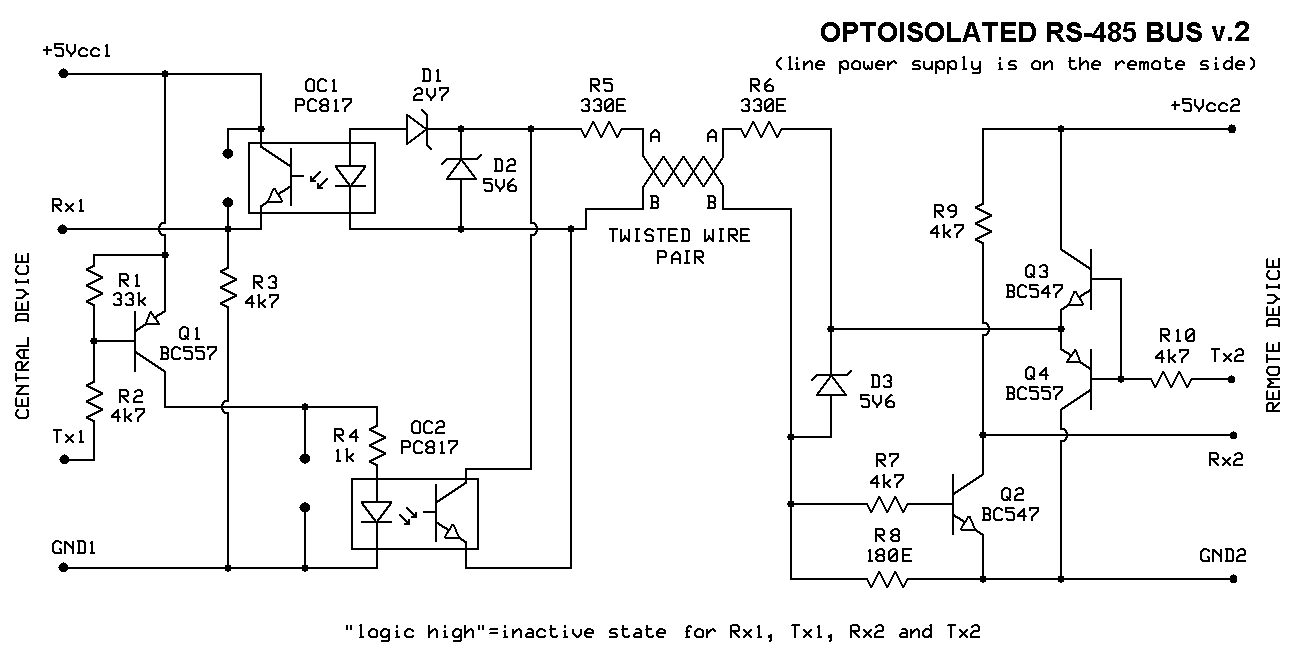The final incarnation of the circuit is a kind of a deviation from the basic idea. In contrast to all the previous circuits, it doesn't supply electrical power to the remote device but instead only provides optical isolation to the central device, while it is assumed that the remote device will be powered from its own local power supply unit.

The difference between this circuit and the other ones is that current flowing through the data line is much less in this case. The reason is that optocoupler IR LED diodes need only a few miliamps for reliable operation, and there are no other electrical loads connected to the data line. The same fact, i.e. low power consumption of the receiver, led to using the simpler variant of the two drivers presented on the first page of this article.
It is possible to connect several instances of these lines to the same pair of Rx1 and Tx1 pins of the central device. Simply, all outputs of optocouplers designated "OC1" should be connected in parallel, while all input circuits of optocouplers designated "OC2" should also be connected in parallel, as noted in the diagram above. Each remote device will have its own independant local power supply, or several of them might share the same supply unit. Either way doesn't influence normal system operation. It is up to embedded software designer to implement propper addressing scheme so that no conflicts among remote parties arrise.
Note that it is not possible to establish direct communication between two remote devices. But the central device might be learnt to act as a repeater. A remote device that wants to send a message to another remote device should instead send it to the central one with the appropriate note that it is expected to be relayed to another remote device as specified in the dedicated address field of the message. Central device therefore needs to accept the message and retransmit it with the new addres in order for the second remote device to accept it. We believe that a routing scheme like this should be a fairly easy one to implement for skilled software desigers.
Line impedances of this data carrying scheme are closer than those of a previous few circuits to the value of 680 Ω specified in ANSI RS-485 standard, but are still significantly lower than that. This means than standard twisted wire pairs could suffer from symbol reflections meaning that the highest data rate will still be limited to 30 kbps or so. Crafty designers should be able to straighten these drawbacks by using propper terminating resistors and faster optocouplers with digital outputs instead of the simple ones with photoransistors we choose to deploy. But for most real world situations DIY practitioners might face, we believe that the inexpensive solution given here will suffice.

